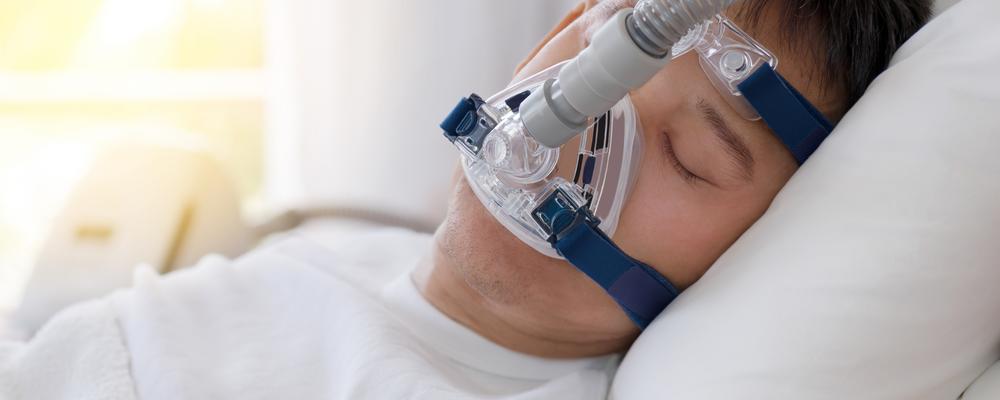
- Home
- Research
- Find research
- Developing precision medicine for sleep apnea with AI support
Developing precision medicine for sleep apnea with AI support
Researchers at the University of Gothenburg are part of a major new European Union project that will identify different subgroups of obstructive sleep apnea using artificial intelligence. Identification of what are known as phenotypes is a prerequisite for the development of precision medicine for sleep apnea. The project will also make diagnostics more accessible.

Sleep Revolution, a large European Union project led by researchers at Reykjavik University, recently received the equivalent of more than SEK 150 million from the EU, and part of this grant will fund a young researcher at the University of Gothenburg.
The EU project uses an enthusiastic and well-functioning network of sleep researchers throughout Europe. For many years, the driving force behind the network has been Jan Hedner and Ludger Grote, apnea researchers at the University of Gothenburg and chief physicians in sleep medicine at Sahlgrenska University Hospital.

“The collaboration with the network adds a lot of joy to my professional daily life. Learning new things from each other is stimulating for us, and the attitude among colleagues is generous and creative,” says Ludger Grote. “I especially enjoy seeing how the network has attracted many new young researchers to the field and allowed senior researchers to qualify for professorships at their universities.”
A joint database
Although it has had no separate funding, the network has been able to build a large joint database with data on 40,000 patients with sleep apnea. The European Sleep Apnea Database (ESADA) has resulted in a large number of scholarly publications in recent years, including those linking sleep apnea and cardiovascular disease.
Both the database itself and the research network are an important basis for the major new EU project. It involves almost 40 international partners from both universities and industry and aims to revolutionize research, diagnosis and treatment for obstructive sleep apnea and related disorders. The project will develop machine learning techniques, which can find patterns in enormous amounts of data to identify the subgroups of the disease that have already begun to crystallize in apnea research.
Treatment with a CPAP (Continuous Positive Airway Pressure) mask or dental guard is often effective, and medications are also under development, says Jan Hedner:
“Treatments work differently for different people with obstructive sleep apnea. As in the case of many other diseases, precision medicine is the next logical step. Thanks to the large quantity of data we have collected, algorithms will be able to help us identify at least four or five subgroups of sleep apnea, which will probably also require different types of treatment.”
AI and SCAPIS
The sleep medicine research team in Gothenburg has already started working with artificial intelligence (AI) to process data from more than 6,000 research participants in the Swedish CArdioPulmonary bioImage Study (SCAPIS). For some time the researchers, have also included a doctoral student with a mathematics background, who works with algorithms in data volumes for sleep apnea.
“The algorithms we work with so far find patterns retrospectively, but as time goes by, they also need to be tested prospectively to validate that they also work in field conditions,” says Hedner.
An advanced wristwatch
People with sleep apnea have short, repeated interruptions of breathing when they sleep, which interferes with sleep. Besides causing daytime drowsiness and fatigue, sleep apnea exposes people to the risk of several serious diseases, such as high blood pressure, heart attack and stroke.
People being evaluated for sleep apnea may need to sleep overnight in a sleep laboratory or borrow measuring equipment to use at home. But the technology is cumbersome and needs to be more convenient to use. A business partner in the EU project has developed a prototype for an advanced wristwatch that can measure heart rate, respiration, oxygenation and other parameters while the patient sleeps at home.
“Some technical development needs to be done, then it is our task to evaluate the watch for clinical use,” says Grote.
“We sleep a third of our lives, and I would like to emphasize that the sleep represents an unused window for medical examinations, which can also be carried out over long periods. We believe that the risk factors that can be measured with the watch could also be applied to assessing the risk of completely different diseases at an early stage so they can be prevented.”
Early apnea research
There has been a dramatic improvement in understanding sleep apnea, and Jan Hedner has been involved almost from the start. One of the first articles on treatment with a CPAP mask captured his interest in the early 1980s. This led to the Gothenburg sleep laboratory’s early adoption of the new technology as one of the first laboratories of its kind in the world:
“I remember that when a colleague and I speculated about how many patients we would need to diagnose and treat, we agreed that it could probably amount to about a few hundred. Today there are about 40,000 people in Region Västra Götaland alone being treated with an apnea dental guard or CPAP mask, which probably has prevented both traffic accidents and several cases of stroke and heart attack, saving many people from premature death.”